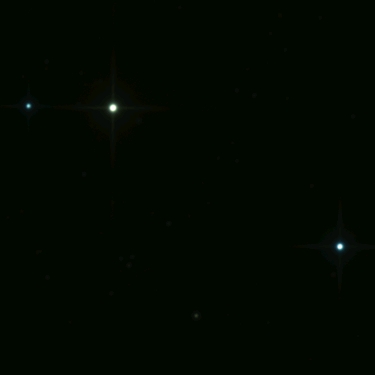
It is estimated that up to 10% of all visible stars represent binary star systems. Binaries are star systems where two or more stars revolve around each other. When these revolutions of one component star around the other leads to a change in magnitude, we have an example of an eclipsing binary. Sirius, one of the brightest stars in the sky, is a binary system involving one dominant bluish component and a less dominant secondary component.
|
Proper Star Name: N/A Bayer Letter: ï1 Cygni Tycho Catalog: TYC 3559-2797-1 SAO Catalog: SAO 49337 Luminosity 4215 +/- 1767 x Sun Distance: 1353 +/- 259 light yrs RA / Dec: 20h 13m 50s / +46° 45' 28" B-V Color Index: +1.190 mag Magnitude (Visual): 3.80 Secondaries:
|
 |
Date: Aug 03, 2005 00:24 - 00:39 UT+3 Location: Athens, Greece Equipment: AP 160/f7.5 Starfire EDF Losmandy G-11 GEM SBIG ST-2000XM SBIG CFW-8A Integrations: R: 80 sec (10 x 8 sec) G: 80 sec (10 x 8 sec) B: 80 sec (10 x 8 sec)
Temperatures:
Software: CCDSoft V5.00.126 AIP4Win V1.4.25 Photoshop V6 Processing: Reduction Calibration/Registration RGB Combine Cropping JPG Compression |
